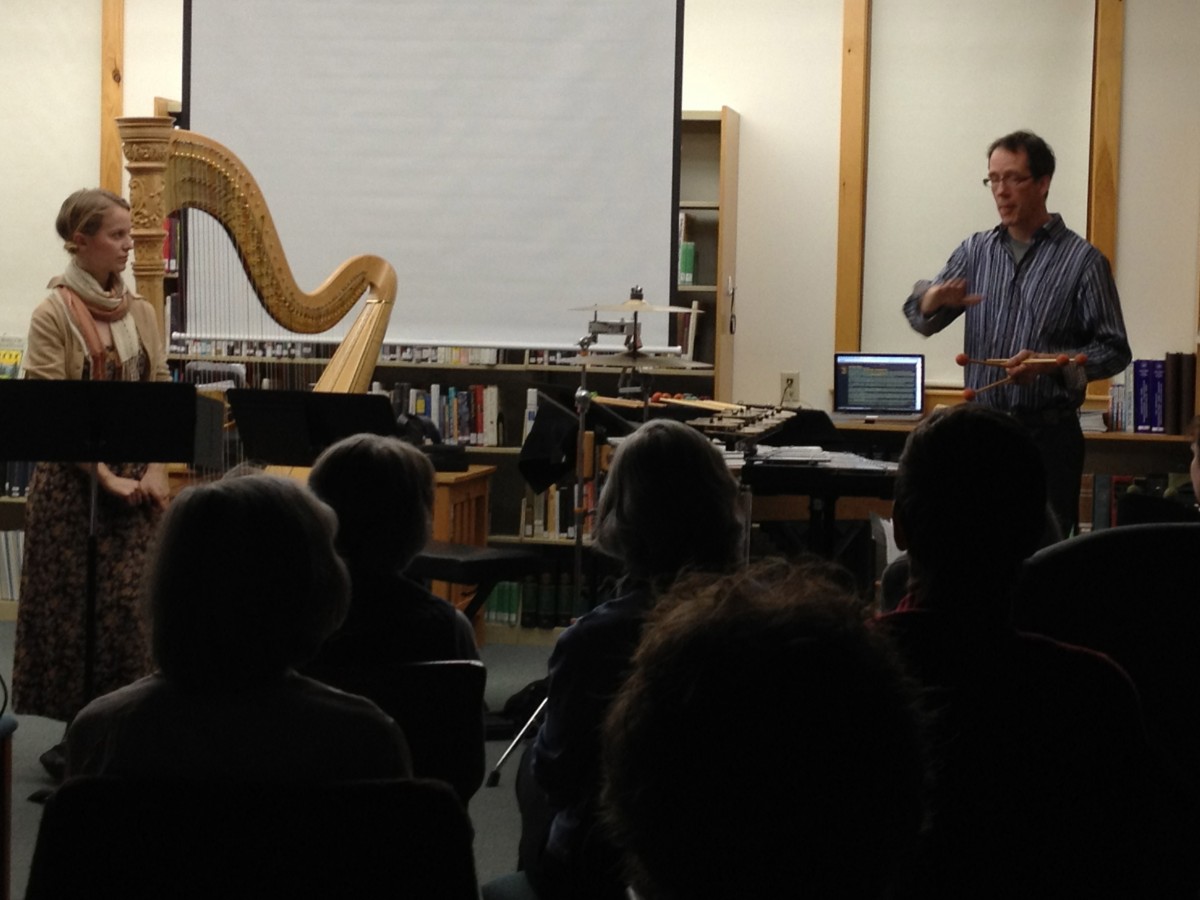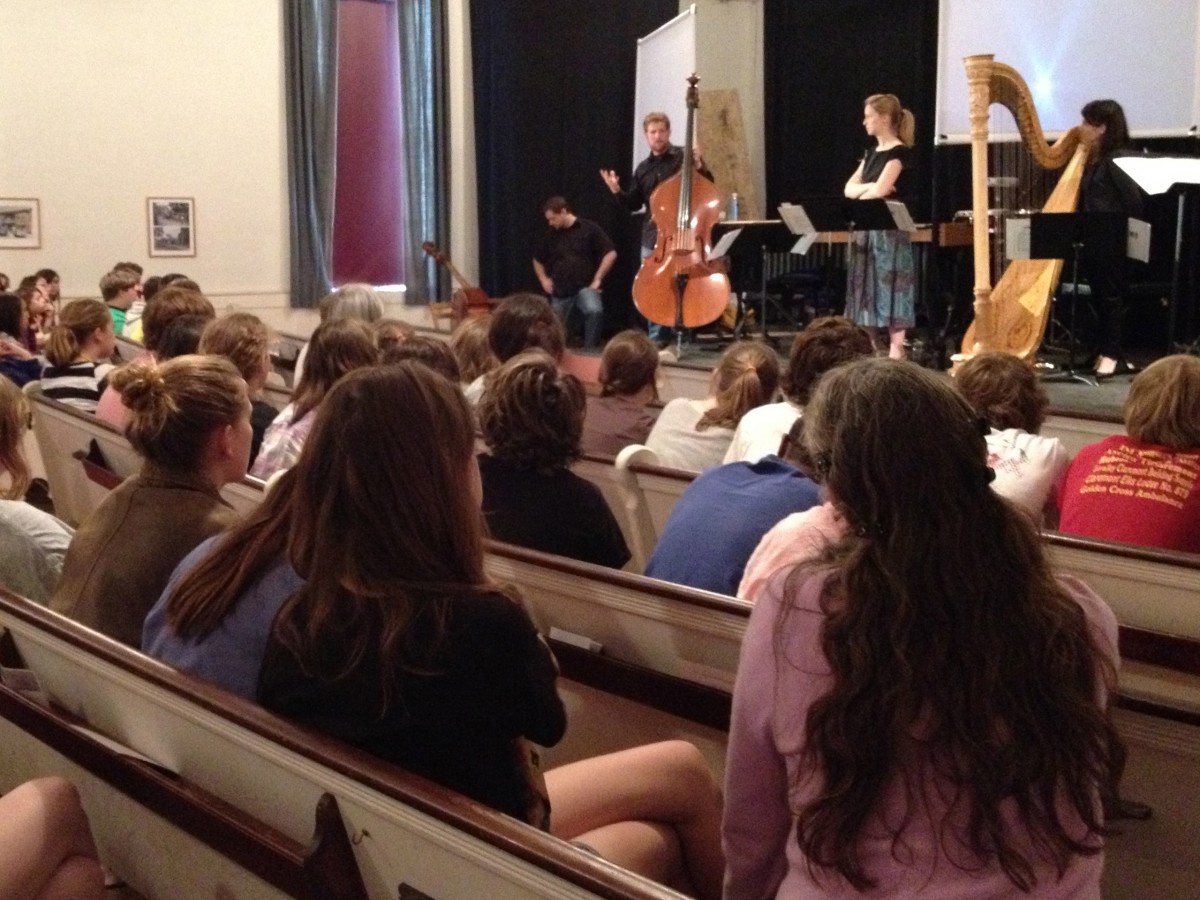Only under the auspices of Yellow Barn
Michael Miller writes for The Berkshire Review:
As I expected, the performance of Gérard Grisey’s Le Noir de l’Étoile was unique, but only after being there and experiencing it can I appreciate just how this could only have happened in Putney, Vermont, under the auspices of Yellow Barn. I heard the work for the first and only time until now in February 2011 in Alice Tully Hall, played by one of the world’s great ensembles, Les Percussions de Strasbourg, who commissioned the work and premiered it in Brussels in 1991. There was something special in this New York performance, because the acoustics of the new Alice Tully Hall permitted them for the first time to play the work without amplification. Since the work is written for six percussionists surrounding the audience, most halls require a modicum of amplification to enable everyone in the hall to hear more or less the same thing. The work is immensely complex, and I consumed my dollop of free champagne after the concert wondering if any other group could even attempt to perform the work.
The answer is “yes, and very well,” as James Beauton, Greg Beyer, Amy Garapic, Doug Perkins, Jeff Stern, and Mari Yoshinaga demonstrated most impressively.
The performance at Putney was a great success in itself, but the circumstances added something marvellous to the event. The masterful performance in Alice Tully Hall was a high-profile concert at Lincoln Center. Yellow Barn’s was — at least intended to be — an open-air concert in rural Vermont. Bad weather reports convinced the organizers to move it to the rain venue, the Greenwood School gym. It turned out to be a lovely evening, and it was a disappointment not to sit under the stars for this astral music, but there were advantages. For one thing, the gym, which is less than a quarter the size of Alice Tully Hall, required no amplification for the percussion instruments; for another, the crickets and tree frogs were in full chorus that night and would most definitely have made their contribution.
This performance was somewhat more careful and by no means as loud as the one at Tully. My hearing was perfectly normal at the end of it — not a trace of deafness. I felt the nature of pulsars as time-keepers came through especially well. Pulsars keep their own time, which is entirely alien to ours. In fact the experience becomes something like what a dialogue with a visitor from another world might be like. On the other hand, the wood blocks and other exotic-sounding instruments evoked the rituals of “primitive” peoples — what Grisey himself described as “shamanistic conjuring.” (A student of religions might call this mediation.) In this second encounter with the work, I experienced the music of the pulsars themselves as an epiphany. The percussion music that preceded it might well have been a calling of the phenomena, and the music that followed as a petition or attempt to interact with them.
The space was splendidly decorated with a beautiful colored banner and a ring, and the spinning cymbal, which marks the conclusion of the work, stood at the center of the space and the audience, not at center front stage — a great advantage.
Bravo to Seth Knopp and all concerned for organizing a musical event at which the ears, the intellect, and the spirit were equally rewarded.
Yellow Barn's Big Bang
Jonathan Potter writes for the Brattleboro Reformer:
Tom Geballe has been an astronomer for 40 years.
Now he’s become a star.
Geballe flew in earlier this week from Hilo, Hawaii, where he works at the Gemini Observatory, to take part in a unique collaboration with a percussion ensemble as part of Yellow Barn’s Artist Residency program. Geballe has been cast as the narrator in a rare performance of Gerard Grisey’s "Le Noir de l’Etoile."
Inspired by the 1967 discovery of pulsars and the strange signals these remnants of supernova explosions were emitting, "Le Noir de l’Etoile," composed in 1989-90 features six percussionists, recordings of those pulsar signals and a narrator who introduces the piece.
Enter Geballe, who met Yellow Barn Artistic Director Seth Knopp three years when Knopp’s group, The Peabody Trio, performed in Hilo for a concert society Geballe heads in his spare time.
The two hit it off, and Knopp was so eager to see the equipment at the observatory, Geballe agreed to take him up at 4 a.m. for a spectacular view of the sunrise over Hilo. Knopp called it "one of the greatest experiences of my life."
When Yellow Barn decided to team with percussionists Eduardo Leandro and Doug Perkins on "Le Noir de l’Etoile" for his residency program, Knopp thought of involving Geballe, both because his sonorous bass voice would be good for the narrator part and because, well, who else was he going to call when he needed an astronomer?
Geballe presented a talk Tuesday night at the Putney Public Library titled "Why is it dark at night?" He is also spending time this week working with students at The Greenwood School, which partners with Yellow Barn on the residency program.
On Tuesday afternoon, Geballe gave a talk on galaxies to all the students there, generating a lively discussion and many thoughtful and engaging questions from the students. One student asked Geballe about the likelihood of life existing somewhere else in the universe.
"My opinion is yes, there must be life elsewhere," Geballe answered. "It’s just a question of chemistry and time."
Which brings us back to "Le Noir de l’Etoile," and the work going elsewhere at the Greenwood School campus, where the gymnasium has been taken over by six percussionists and a whole warehouse full of drums, cymbals, gongs, bells, sticks, mallets, brushes and other noisy devices.
Putting together a piece this big, with each percussionist playing so many instruments with such precision required is, indeed, an exercise in chemistry and time for a group assembled by Perkins and Greg Beyer (filling in for Leandro, who had to withdraw for personal reasons) and four auditioned musicians.
Grisey’s "Le Noir de l’Etoile" is a big undertaking, an hour-long, expressive piece for six percussionists grouped around an audience.
The week-long residence will culminate in a free performance on Friday, outside on the Greenwood School soccer field beginning at 8:16 p.m. (sunset). The audience will sit in the middle of the field (bring blankets or folding chairs) and the percussionists will surround them. The effect should be spectacular.
Music with pulsar obligato
Michael Miller writes for The Berkshire Review:
This roughly hour-long work for six percussion players encircling the audience was Grisey’s response to his discovery of the sound of pulsars. Neither Grisey, although he taught at Berkeley for four years, nor the largely European movement to which he belonged for a while, Spectralism, is very well known in the United States. Last year’s American tour by Les Percussions de Strasbourg in which they played Le Noir de l’Étoile (for a review of their Lincoln Center performance, click here) and the New York Philharmonic residency of Grisey’s pupil, Magnus Lindberg, have done something to correct that. Susanna Mälkki recently conducted Grisey’s 1977 work, Modulations, with the San Francisco Symphony, reviewed here by Steven Kruger.
By the time Grisey came to write Le Noir de l’Étoile, on commission from Les Percussions de Strasbourg in 1989-90, he had moved beyond Spectralism, which was a highly rigorous method for composing music from the nature of sound itself and the way it is received by human perception. For him “music is made with sounds, not with notes.” In 1986, Grisey began to focus on unpredictability and volatility in music, and the organization of his works became less readily apparent, fractured as they were by abrupt changes and outbursts. In this work he turned to the nature of recently discovered entities in space, pulsars, which exist far outside our solar system, following processes alien to the regularity of the cycles we have come to depend on for life on our planet.
In Vermont, open air drumming
Is there music in the night sky?
Of course thinkers from Pythagoras to Johannes Kepler have pondered “the music of the spheres,” and composers from Gustav Holst to Mark-Anthony Turnage have on occasion waxed astronomical in their own works.
But none have addressed the question quite as literally as the French spectralist Gerard Grisey, whose hourlong percussion work of 1989-90, “Le Noir de l’Etoile,” would seem to settle the matter once and for all. Conceived for six percussionists, tape, and live electronics, the piece takes as its inspiration and musical DNA the captured sounds of two actual pulsars, rhythmically beating from distant corners of the universe.
And at sunset on May 25, the sounds of those pulsars will be returned to the night sky once more, as a group of percussionists in residence at Yellow Barn will mount a rare outdoor performance of Grisey’s bracing masterwork in an open field part way up a mountain in Putney, Vt. The musicians will perform on six platforms encircling the audience.
“There are a few pieces out there that go beyond drumming,” said Eduardo Leandro, a percussionist who has served on the Yellow Barn faculty and first proposed doing the Grisey outdoors. Leandro regards “Le Noir de l’Etoile” as a landmark 20th-century percussion score on par with iconic works by Varese, Xenakis, and Reich. “These pieces have an artistic and aesthetic core that remind you of the reason why percussion exists.”
Related materials for the Grisey residency
Our Artist Residencies are as much an opportunity for Yellow Barn’s audience, staff, and the Putney community to explore new ideas as they are for the resident artists themselves.
As I am sure it is for many, the planetarium was always one of my favorite places to visit as a child. Looking forward to Yellow Barn's upcoming residency devoted to the preparation and performance of Gerard Grisey's Le Noir de l'Etoile, I put together a group of pieces that like Le Noir de l'Etoile draw inspiration from and give new meaning to natural wonders. In addition, I asked a friend who turned his love of astronomy into real knowledge, to recommend several books (and a few videos) that might take us into that universe soon to be explored by Yellow Barn's six percussionists and Tom Geballe of the Gemini Observatory.
—Seth Knopp
LISTENING
After almost 40 years, I have decided to retire from concert life. My health no longer allows me to live up to the high standard that I have always set for my art and myself. I owe a lot to this wonderful profession and leave without a trace of bitterness.On the contrary, I am looking forward to the new challenges that will now enter my life. I would like to thank all my fellow musicians and colleagues, with whom I stood together on stage, all the organizers, and my audience for their loyalty. —Thomas Quasthoff
READING
WATCHING
Images from the Crumb Madrigals Project
The Crumb Madrigals Project (Photos: Zachary Stephens)
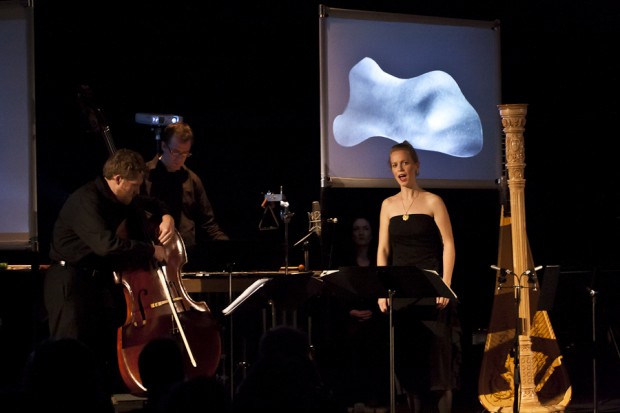
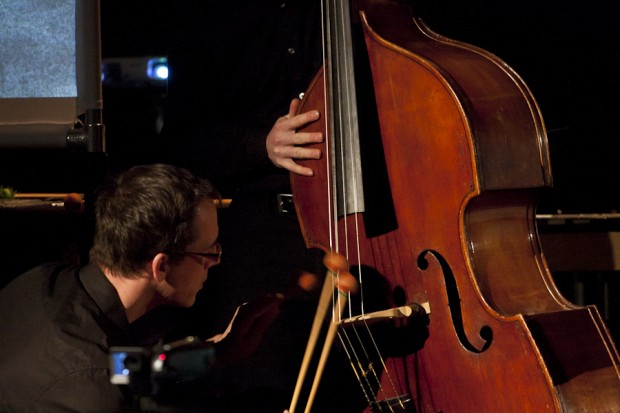
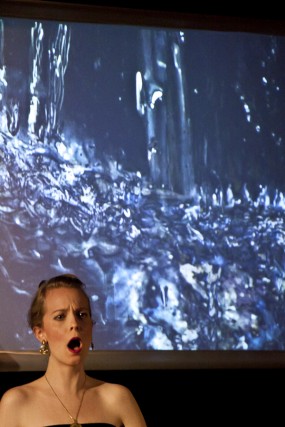
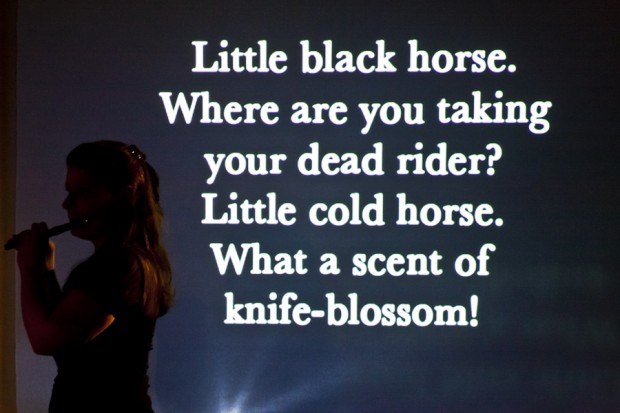
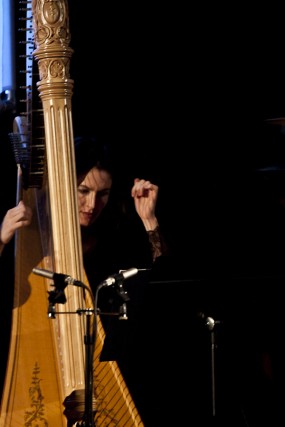
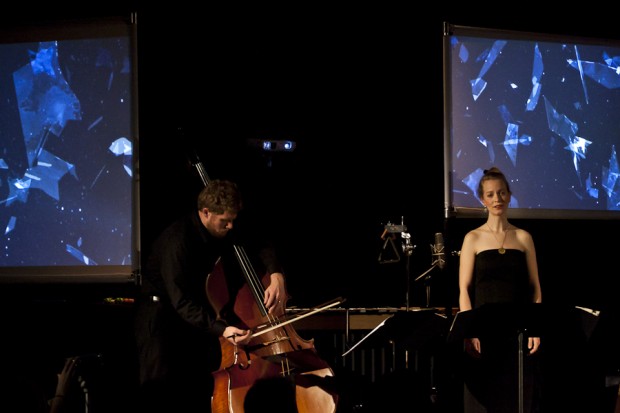
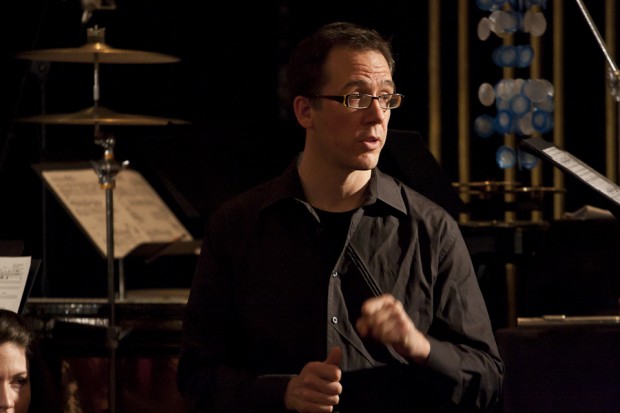
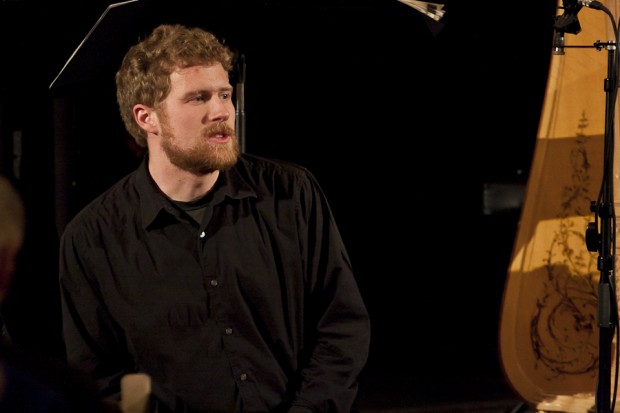
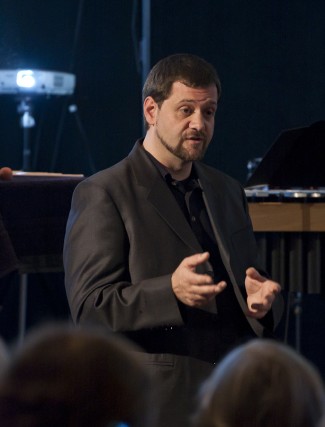
After devoting a week to developing a multi-media presentation, Yellow Barn's Crumb Madrigals artist residency culminated on March 24, 2012 with a public performance and discussion at Next Stage in Putney, VT. During their week in Putney the artists shared their work with community members in a lecture-demonstration at the Putney Public Library and with 6th, 7th, and 8th grade students from Putney Central School and the Grammar School.
